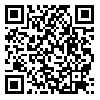BibTeX | RIS | EndNote | Medlars | ProCite | Reference Manager | RefWorks
Send citation to:
URL: http://jhr.ssu.ac.ir/article-1-368-en.html
2- Department of Health in Disaster and Emergency, School of Public Health, Shahid Sadoughi University of Medical Sciences, Yazd, Iran
3- Department of Health Education, School of Health, Shahid Sadoughi University of Medical Sciences, Yazd, Iran
Introduction: Biological attacks are a phenomenon that started on a serious note in the twentieth century and such weapons are being developed every day.The agent of plague is one of those listed as biological weapons by the Weapons Convention. So, the danger of its biological or bioterrorist applications by the enemy is possible and poses a serious threat. The purpose of compiling this article is to update information of health personnel about plague and the bioterrorist aspect of this disease.
Methods: This article is a review study which had been undertaken based on articles searched from the library and the internet (1990–2016).
Results: More than 2000 species of bacteria have been identified in three main groups of bacillus (rod-shaped), cocci (round and oval) and spiral (helical) but only approximately 100 species have been identified as pathogenic and less than 10 species are used as suitable biological agents for military application and the plague agent is one of them. Yersinia pestis is a type of gram-negative anaerobic coccobacillus from the Enterobacteriaceae family and if it is stained with Wright, Giemsa or Wayson it can be seen as bipolar under a microscope.
Conclusion: Nowadays, despite development of science and technology, humans are not able to predict time and location of this type of attack. So, we should be prepared for this unavoidable eventuality. Considering the importance and necessity of preparing to deal with attacks, authors of such studies and professionals should consciously plan and try to prepare against these dangers.
Received: 2017/06/5 | Accepted: 2017/06/5 | Published: 2017/06/5
| Rights and permissions | |
 |
This work is licensed under a Creative Commons Attribution 4.0 International License. |





